Is there such thing as “real yoga”?
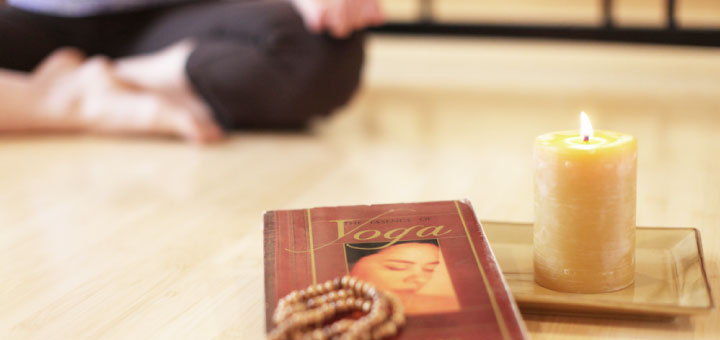
I remember in my early days as a yoga teacher I would get indignant when I heard people talking strictly about asana. “This is not real yoga! Yoga is so much more than asana!” – I exclaimed, feeling like a vanguard of authentic yoga. I still believe that yoga is much more than asana, but I also know that both self-righteousness and indignation are actually obstacles on the yogic path 🙂 The question is – how wide is the gap between what yoga was meant to be and what people’s expectations are when they come to a yoga class? Can we bridge that gap somehow?
For insight into what it’s supposed to be, let’s turn to yogic sage Patanjali and his Yoga Sutra-s. Right off the bat, he tells us that yoga is about mastery over the vortex of the mind. Then, he says, when the dust settles, you can see yourself for who you really are, your True Self. Sounds great! I imagine now entering my yoga class (I used to teach classes as big as 60 students) and asking them: “Who would like to work toward discovering your True Self today?” I doubt that many hands would go up. Somebody would probably say: ”Can we just stretch our hamstrings?”
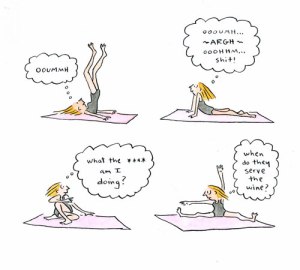
Most new students who come to my yoga classes are looking for something physical—plain stretching or pain relief; some come to manage stress, and some to “get out of the head.” Every now and again, I hear something about “being more grounded” or “feeling more connected.” Does this mean that all those people are missing out on the true meaning of yoga? Not necessarily.
One of the best yoga models used to describe the human system is the Panchamaya model. It states that if we are planning to be vibrant, healthy human beings, we need to consider all the components that make up our systems: physical structure, physiological processes, the content of our minds, our ideas and attitudes toward our surroundings, and our sense of longing for connection to something greater then ourselves.
Here is how those five dimensions (or five bodies) are described in a yoga classic called The Taittiriya Upanishad:
“Human beings consist of a material body built from the food they eat. Those who care for this body are nourished by the universe itself.”
“Inside, there is another body made of life energy. It fills the physical body and takes its shape. Those who treat this vital force as divine experience excellent health and longevity because this energy is the source of physical life.”
“Within the vital force is yet another body, this one made of thought energy. Those who understand and control the mental body are no longer afflicted by fear.”
“Deeper still lies another body comprised of intellect. Those who establish their awareness here free themselves from unhealthy thoughts and actions and develop self-control necessary to achieve their goals.”
“Hidden inside is yet a subtler body, composed of pure joy. It is experienced as happiness, delight, and bliss.”
Yoga is a unique discipline that has developed specific tools for addressing issues in each one of these dimensions. You don’t take Pepto-Bismol to treat a headache – in the same way, the selection of yogic tools needs to be appropriate for the issue that we are dealing with. Our job as yoga teachers is to continuously refine our skills and understanding of each one of those levels and apply our knowledge in a way that is appropriate for the student. Private yoga sessions give us quite a bit more flexibility in addressing the individual student’s needs. We have an opportunity to ask questions to better understand the client’s health and well-being at each one of those dimensions and simultaneously make our own observations of their current state. Based on that information we design a yoga practice that is appropriate for that particular client at that moment and moves her in the direction of self-transformation.
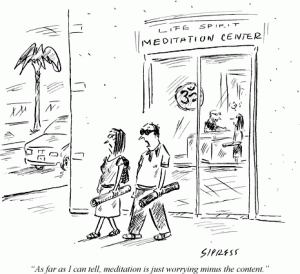 Each dimension can serve as a doorway into the next one. You might begin your journey with physical awareness; once that deepens, you might be able to tune into your energy and physiology, then become aware of the activities of your mind, and then glimpse a connection to something greater than yourself. This is a gradual process that cannot be rushed. Each student will arrive at the next layer when they are ready, or maybe they never will. All we can do is show the student that the depth is there; whether or not she decides to dive in is not up to us.
Each dimension can serve as a doorway into the next one. You might begin your journey with physical awareness; once that deepens, you might be able to tune into your energy and physiology, then become aware of the activities of your mind, and then glimpse a connection to something greater than yourself. This is a gradual process that cannot be rushed. Each student will arrive at the next layer when they are ready, or maybe they never will. All we can do is show the student that the depth is there; whether or not she decides to dive in is not up to us.
There is such a thing as a “curse of knowledge,” though. Once we know something, it is really hard to imagine what it was like not to know it. Engulfed in the complexity and depth of the yoga tradition, we forget that yoga is only a small part of our students’ lives. They go on about their regular business, and they need the yoga practice to support them in their life, not rule it. I remember one of my clients, a new mom, who, at age 40, was overwhelmed by motherhood and the severe hormonal shifts it brought along. Fresh out of my yoga therapist training, I was trying to get an idea of where she was on every level of the Panchamya model, asking her multiple questions about this and that. Finally, she paused and said: ”Can we just move and breathe? That’s all I really need right now.” Wow! That was a wake-up call for me. I was so consumed by my new role and my new knowledge that I completely missed out on what was right in front of me.
 When I became a mother, I could understand exactly what she meant. Sleep-deprived and overwhelmed with responsibility, enlightenment in any shape or form was the last thing on my mind. And it still is. Nowadays, all I want from my yoga practice is a body without pain, a decent level of energy, a somewhat focused mind, and some sort of inner peace. Does it mean that I am not doing “the real yoga”? It is real to me.
When I became a mother, I could understand exactly what she meant. Sleep-deprived and overwhelmed with responsibility, enlightenment in any shape or form was the last thing on my mind. And it still is. Nowadays, all I want from my yoga practice is a body without pain, a decent level of energy, a somewhat focused mind, and some sort of inner peace. Does it mean that I am not doing “the real yoga”? It is real to me.
And one last thing. I must admit I get slightly annoyed if I take a yoga class, and right off the bat, the teacher commands: “Get settled. Close your eyes. Connect to the Divine.” Ha? I am sorry, I am not an electric appliance that only needs to plug into an outlet to get connected. I need a bit more work to arrive at that feeling. Of course, an experienced yoga teacher can build a practice that will help you feel more connected within the space of one yoga class, but that requires skill and careful planning.
My point is this: We need to get off the high horse of what we know and what yoga “should” be and spend more time listening to what the student wants. As we address her immediate needs, other doors will open and her interest will grow. Or it won’t, and that’s OK, too. Teaching yoga is about the student, not the teacher. And when it comes to yoga classes, I know that it is possible to teach out of the place of deeper awareness, whether or not you are explicitly talking about yoga’s ultimate goals.

Whether you want to gain a deeper understanding of the inner layers of your system or just keep your body strong and flexible, you can do it with our in-depth educational yoga series. Each of these series covers a specific layer of your system (structural, energetic, physiological, mental-emotional).



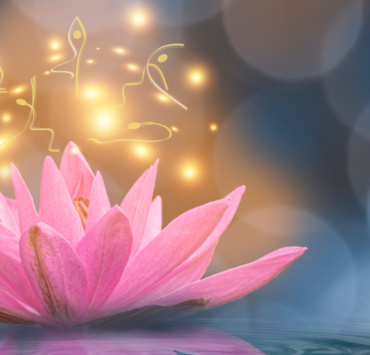


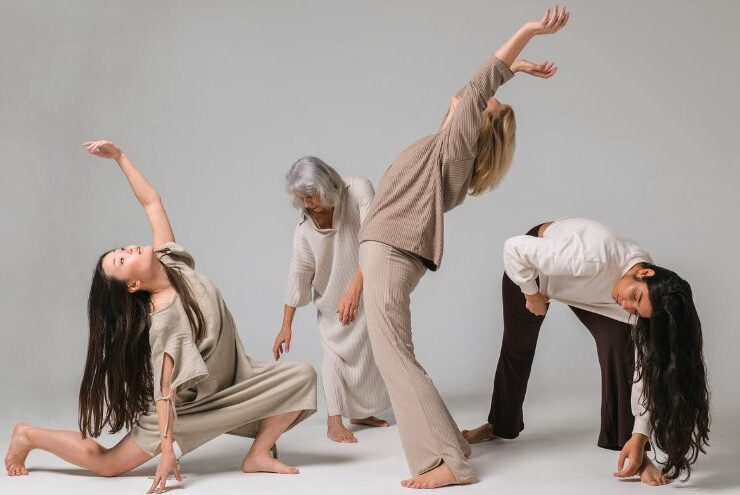



Loved it. Thanks for sharing, I will be talking about this in my teacher training next Thursday!
Thanks Michael! Have a great teacher training!
I agree. I tire of hearing people say what is or isn’t Yoga. I responded recently to a thread where someone who “practiced for 30 years” opined that hot yoga isn’t meditative or peaceful. I hear this often in regards to Bikrams. But for me, the intensity was necessary. It remains a place where I become incredibly grounded because it is so demanding. On the other hand, doing a backbend over a folder chair is totally NOT relaxing or meditative to me! But I don’t slam people who like to use props. I just don’t get the judgment.
Thank you for sharing, Andre! I agree – to each their own and I think it’s actually great that so many styles of yoga are available – the student can find what fits him/her best.
Hi Olga, glad to see your exploration of the topic.
Yes, yoga means reconnection, to who? the Divine. I understand the valuable lessons learned of starting at the level where the student is. As the teacher though, it is assumed that you are aware of higher possibilities, and that should be shared, then people will self select to go as far as they wish. What is beautiful is as each person unfolds, the desires deepen naturally.
As you are still “not interested in enlightenment in any shape or form” after some years of teaching yoga, then you can offer that as a goal, to others. Enlightenment, self realization is the ultimate goal. That is why there are so many types(stages) of yoga to get to the ultimate goal of life. I hope this peaks your interest. Take a read of the epic conversation between Krsna and Arjuna in the Bhagavad Gita, As it Is, compiled by AC Bhaktivedanta Prabupada.
Would love to continue discussion on this topic. It is really an important one.
Carolle
Hi Carolle! I am not disputing the ultimate goal of yoga. I am saying that we shouldn’t exclude those who are not interested in it. A train analogy comes to mind. We know where the yoga train is going (enlightenment) and we certainly want to communicate that to our students; but we should also accept the fact that some of them would want to get off at the next station or the one after that, and not stay on for the entire trip. I am concerned that some of us has become “yoga fundamentalists’, who argue that if you are not interested in the ultimate destination, there is no place for you on the yoga train. And student’s interests change all the time; if they are not interested now, may be they will become interested later. Remember Patanjali? Sutra 3.6 Tasya bhumisu viniyogah “According to the needs of the student, yoga is applied”.
7.20.13 Hi Olga, Here is an important correction of this sentence, for you and all the readers:
As you are still “not interested in enlightenment in any shape or form” after some years of teaching yoga, then you can NOT offer that as a goal to others. You CANNOT give what you
do not have.
Again , thank you for the opportunity to discuss this most important topic: the goal of human life.
Carolle
That’s an interesting question: what can one teach? I certainly agree that it’s preferable to teach from one’s experience. But let’s say the teacher cannot do a certain yoga pose, but understands how to do it – should she not teach it? For example, when I was pregnant I couldn’t do Dhanurasana, but I felt perfectly comfortable teaching it. Although this is simplified, but searching for the ultimate connection is kind of the same thing – at one point I was interested, so I know how to approach it. Should I not teach it because I am personally not interested right now? I think I can. I hope you are not saying that yoga teachers cannot teach certain things until they reach a high level of proficiency in it. One can never “master” asana, pranayama or meditation; it’s a process of exploration. Using this logic, only enlightened people could teach about the connection to the Divine. How many enlightened teachers do you know?
I don’t agree with your line of reasoning, Carolle. At a training recently, one of my teachers, Chase Bossart said of meditation: “we can only prepare for meditation to occur,” we can’t actually will it to happen. I would say that’s the same as teaching, we can only help others by teaching them to prepare to receive. The notion of connection to the divine or enlightenment as qualification is quite subjective.
Andre, I completely agree. Beautifully said!
So when do they serve the wine? LOL
You’re right, but is it self righteousness? Or education? Asanas are a small part of yoga. They do nothing more than prepare for meditation, which is the superior vehicle. In many traditions asanas are considered a lesser vehicle because they a merely an external tool used, an action.
If people want to stretch their hammys or cure low back pain why not just go to a gym? I think the western glamorization of yoga, the new age craze of the late 90’s and the organic generation of today has made yoga vogue, but its missing the mark by millions of light years.
When you ask people in your class if they want to abide in their True Self, im sure 99% of them have not a clue what that is and that is sad.
I get disheartened, because there are a million yoga blogs on the internet, but I can’t even chat along with them because almost all of them do not have a strict sadhana. They take what they want from what little they know of yoga, but still hold onto their sensual comforts, drink wine, have sex promiscuously, etc. If you were to find a true Guru 2 years ago or heck even one today, but lived that way, he/she wouldn’t even accept you as a disciple.
People aren’t in search of knowing their true nature, which is that ever shining bliss of Self, they want to look fit and to jump on the bandwagon of the craze.
Thank you for sharing your story.
Guru om
Daniel
Hi Daniel,
I think that commercialization of yoga is unfortunate, but I guess it’s inevitable. As far as holding on to one’s “sensual comforts’, I believe that there are 3 types of yoga practitioners: rogi, bhogi and yogi. Rogi is driven by personal gain and desire for pleasure; bhogi is interested in spiritual pursuits, but also likes comfortable shoes and a glass of wine; he is considerate of others and their choices. Yogi is the one who basically renounced the material pleasures and whose highest goal is to achieve enlightenment. From my standpoint it’s OK to be a bhogi, I certainly am one. It’s not my place to make choices for anybody else. And some of those people who “jumped on the bandwagon of the craze” might get interested and look deeper, others won’t and it’s fine. We can’t force-feed spirituality to anyone, but we can teach from a place of patience and awareness. And if you do, the students who are interested in it will find you.
Just replying to your earlier post, but now that I understand it really doesn’t matter. Thank you again. But, I would say that we can’t force spirituality people, but if someone is going to take up sadhana, yoga is the goal. There is no half effort, its either all or nothing. The goal of yoga is union (well if you’re a monist), but I guess if you’re a dualist in the west its physical health?
Anywho, I won’t question the validity of yoga in the west anymore. The true yogis know who they are, I do think though that people who take hatha classes or even teach them should not call themselves yogis, that’s an insult to the tradition. A yogi is a master of his mind, not someone who does gymnastics.
Again though, not being rude, that is actually a fact.
And thank you again for being an upa guru. You have now idea how much you have helped me.
Namaste,(hehe that’s another thing, people saying Namaste, but not meaning it or abiding in the meaning 🙂 )
Take care and G’luck!
Daniel
http://shivatantrik.com
Also, “Remember Patanjali? Sutra 3.6 Tasya bhumisu viniyogah “According to the needs of the student, yoga is applied”.”
That is not what that sutra means at all. The sutra speaks of samyama. It speaks of subtle application which is a natural unfolding and not through iccha(will). Its dharana,dhyana and Samadhi, which just happens when the mind is still. ie one holds awareness on the sandhi of the breath.
Where did you get your translation?
Guru Om
Daniel
I got the translation from my teacher, Gary Kraftsow who spend 30+ years studying the sutras with different teachers, including Sri Krishanmacharya.
Well someone missed the mark. Didn’t know who Krsnamacharya was(probably cause he is a Vaisnava). If he is the father of modern yoga its a no wonder why yoga moved away from its real purpose. Viasnava’s are dualists, how can one abide in Self which is God if they are dualists?
Everything makes sense now. I’m not trying to be rude or funny either. I understand and thank you!! Years of confusion shattered in an instant, guess you’re my upa guru now. 🙂 No need to question why yoga is so dumbed down in the west, it was Krsnamarcharya and the supporters of Vinyoga who made it acceptable to be used as an art of self healing.
Thanks again! 🙂
Pranams!
Daniel
Interesting chain of posts there. It begins by decrying the commercialization of Yoga and ends with judgment… all in the first post! Subsequent posts are dismissive and finish with sarcasm and smiley faces. Sādhanā: a means of accomplishing something, an ego-transcending spiritual practice. The only thing you’ve accomplished is alienate people who might engage with you. But, I don’t even think you really wanted a dialogue, your ego (which you haven’t transcended, btw) wanted to be heard. Perhaps it’s because you prefer a sense of superiority to that of enlightenment?
For those interested, I got fed up with this kind of attitude and wrote about it here. My ego expression!
🙂 thank you